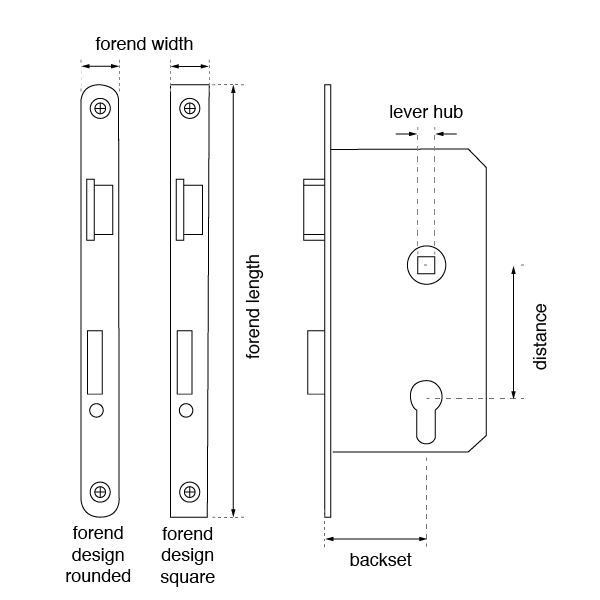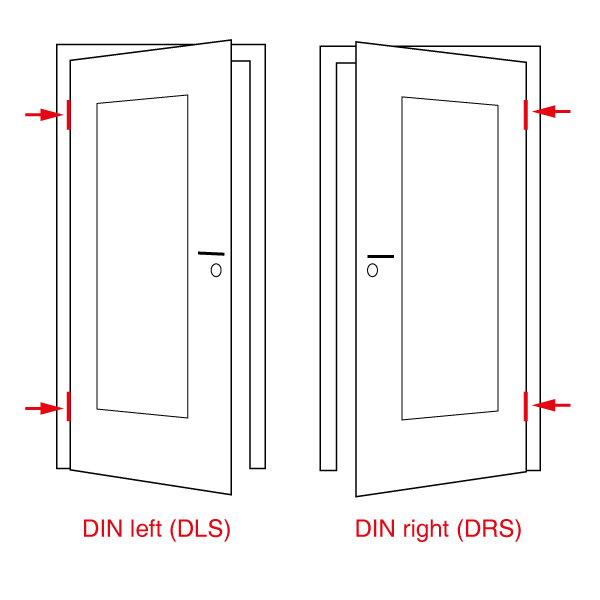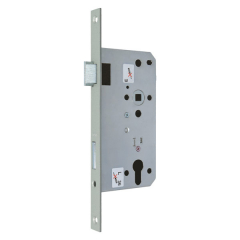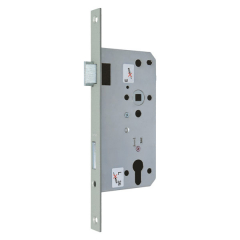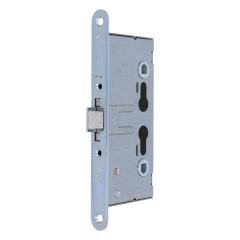Panic locks are designed for escape doors which must be closed or locked from the outside but can always be opened from the inside. These are divided into different panic function classes.
Panic function E (alternating function):
The panic function E is intended for doors that can only be opened from the outside with a key. A blind plate or fixed knob is usually mounted here. From inside, the door can be opened as usual using the lever handle.
>> read more
Panic function D (transit function):
The panic function D is suitable for escape doors in e.g. administration and office buildings or retirement homes. The door has a lever handle set on both sides and a lock with splitted hub. The door can be locked from the outside, but escape from inside is always possible. After operating the lever handle from the inside, the lever handle on the outside is also engaged and is open for the transit function.
Panic function B (switchover function):
The panic function B with lever handle on both sides is intended for emergency exit doors with high public traffic. The door has a lever handle set on both sides and a lock with splitted hub. The door can be locked from the outside, but escape from inside is always possible. After operating the handle from the inside, the handle is disengaged on the outside and the door cannot be opened from the outside.
Panic function C (forced closure function):
The panic function C with lever handle on both sides is intended for emergency exit doors with high public traffic. The door has a lever handle set on both sides and a lock with splitted hub. The door can be locked from the outside, but escape from inside is always possible. After operating the lever handle from the inside, the lever handle on the outside remains disengaged and the door cannot be opened from the outside. Access is only possible after key operation.
Backset (in mm): Is the distance from the centre of the lever handle or lock cylinder to the front edge of the forend.
Distance dimension: Is measured from the centre of the lever hub or turning knob to the centre of the cylinder recess (keyhole).
This measure is standardized in Germany with the following dimensions:
- 72 mm for interior apartment doors
- 78 mm WC - door
- 92 mm front door / apartment door outside
Square spindel:
- square spindel 8 mm is for room doors
- square spindel 9 mm for fire protection doors
- square spindel 10 mm for external doors
Forend width and length:
The forend is the front face of the mortise lock which is visible after installation in the door. The design of forend can be rounded or square.
Door alignment:
The DIN direction of the door alignment is also important for the selection of the lock. A distinction is made here between DIN right and DIN left.
If the door hinges are on the left-hand side when observer looks at the closed door, this is a door with a DIN left door,
if the door hinges are on the right side, this is a DIN right door.
<< read less




